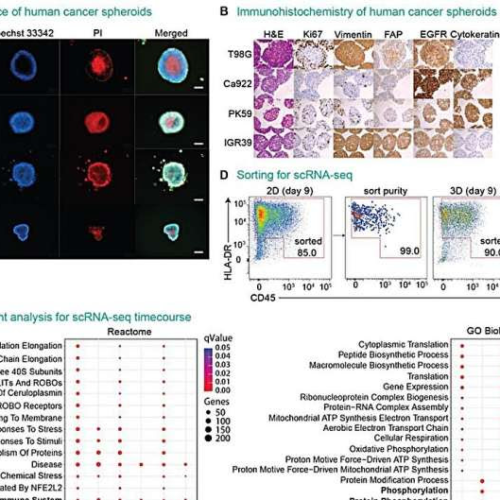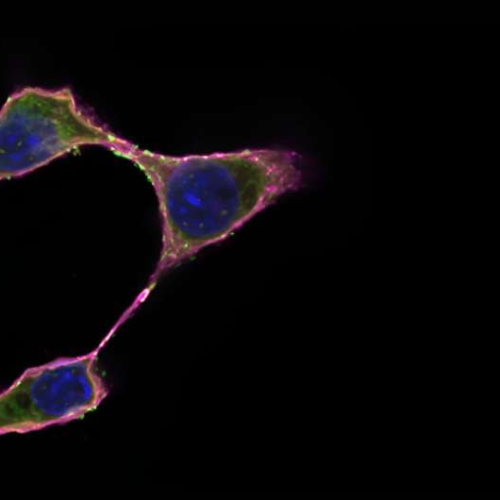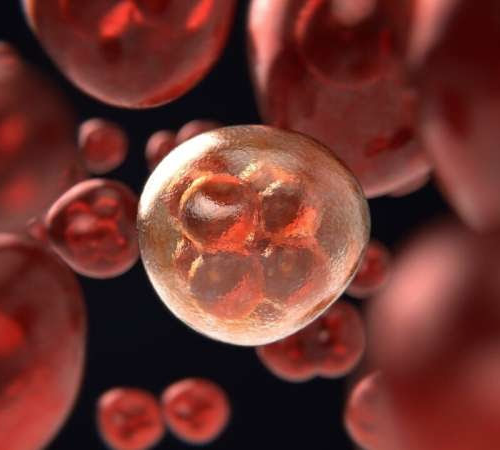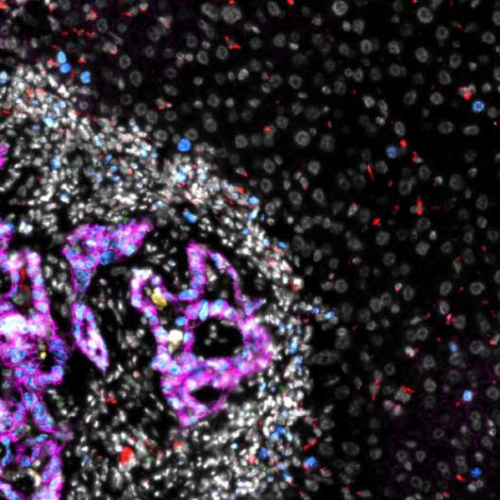Posted Today Researchers are shining a light on cancer cells’ energy centers – literally – to damage these power sources and trigger widespread cancer cell death. The study focused on disrupting the inner membrane of mitochondria, the primary producers of energy that fuels cell functions. Mitochondria are depicted in yellow in the image above of an osteocarcinoma cell....
Tag: <span>cancer cells</span>
Scientists uncover protein that helps cancer cells dodge CAR T cell therapy
by City of Hope National Medical Center Structure showing the targetable sites of the City of Hope-discovered YTHDF2 protein. Credit: Dr. Jianjun Chen’s Lab / City of Hope Scientists at City of Hope have collared a tricky culprit that helps cancer cells evade CAR T cell therapy. CAR T cell therapy harnesses the immune system to...
New immunotherapy platform has increased potential to target cancer cells
by Children’s Hospital of Philadelphia Credit: Unsplash/CC0 Public Domain Researchers from Children’s Hospital of Philadelphia (CHOP) and Stanford University have revealed the molecular structure of TRACeR-I, a protein platform for reprogramming immune responses. A better understanding of its structure may help optimize designs for the platform, which can be used to develop cancer treatments by either...
Scientists glue two proteins together, driving cancer cells to self-destruct
Stanford Medicine researchers hope new technique will flip lymphoma protein’s normal action — from preventing cell death to triggering itPeer-Reviewed Publication Stanford Medicine Our bodies divest themselves of 60 billion cells every day through a natural process of cell culling and turnover called apoptosis. These cells — mainly blood and gut cells — are all...
Research shows caterpillar fungus can slow down growth of cancer cells
Peer-Reviewed Publication University of Nottingham image: A caterpillar infected with Cordyceps militaris, the pretty orange fungus that produces Cordycepin.view more Credit: Daniel Winkler – Mushroaming New research into a chemical produced by a caterpillar fungus that has shown promise as a possible cancer treatment has revealed how it interacts with genes to interrupt cell growth signals. The discovery is...
How cancer cells may be using ribosomes to hide from the immune system
A ribosome, its different parts depicted in different colors. Ribosomes are the protein factories of our body’s cells. Credit: Netherlands Cancer Institute The protein factories of our cells are much more diverse than we thought they were. Scientists from the Netherlands Cancer Institute have now shown that cancer cells can use these ribosomes to boost...
Reprogramming cancer cells to attack themselves
September 16, 2024 by Bob Yirka , Medical Xpress cDC1 reprogramming progresses in human cancer spheroids. Credit: Science (2024). DOI: 10.1126/science.adn9083A team of health and medical researchers affiliated with a host of institutions across Sweden has tested the possibility of reprogramming cancer cells into cDC1 cells as a means for destroying the protective shield around...
Cancer cells may be using lipids to hide from the immune system
September 9, 2024 by Katherine Fenz, Rockefeller University Glycosphingolipids (in pink, via Cholera Toxin B) are so critical for cancer immune evasion that certain cancer cells cannot proliferate without it. Credit: Rockefeller UniversityCancer cells seldom start off stealthy. Quite to the contrary, they announce their presence to the immune system by planting chemical red flags...
Light-activated macrophages show increased appetite for cancer cells
August 12, 2024 by University of California – Santa Barbara Credit: Pixabay/CC0 Public DomainThe body has a veritable army constantly on guard to keep us safe from microscopic threats from infections to cancer. Chief among these forces is the macrophage, a white blood cell that surveils tissues and consumes pathogens, debris, dead cells, and cancer....
Researchers uncover how colorectal cancer cells colonize the liver
JULY 24, 2024 by ETH Zurich A colorectal cancer metastasis (left half of the image) in the liver. Colorectal cancer cells, pictured in magenta, surrounded by other cells, in white, within the metastasis (microscopy image). Credit: ETH Zurich / Morgan Roberts, Elena Guido Vinzoni In cases where cancer is fatal, 9 out of 10 times...




